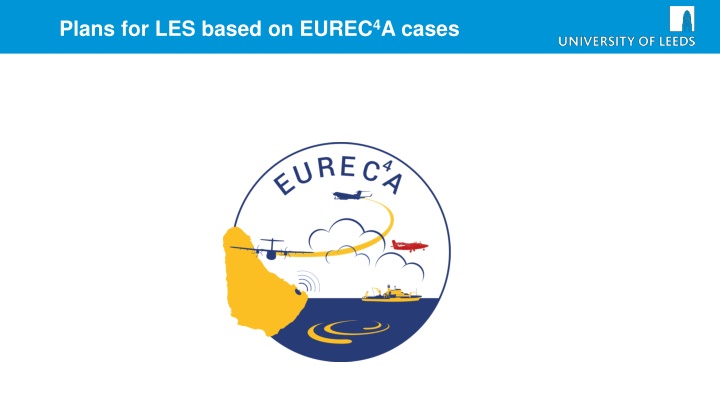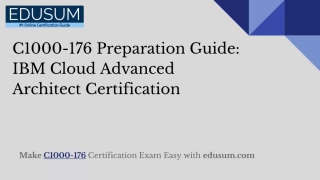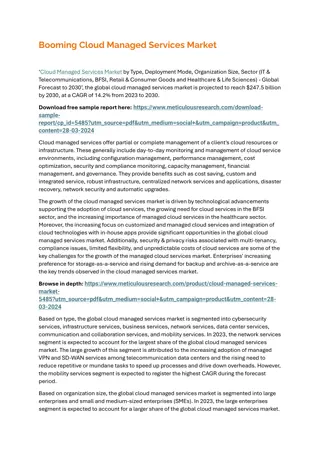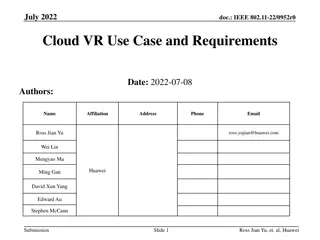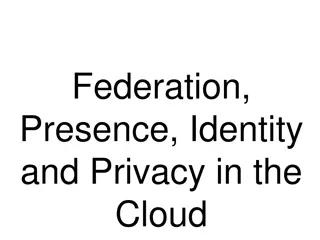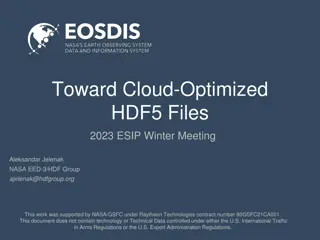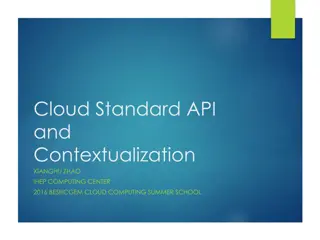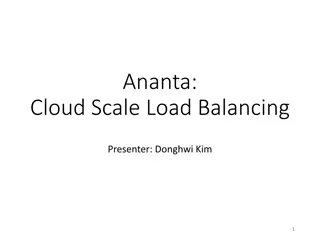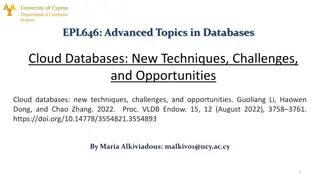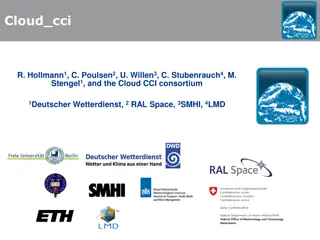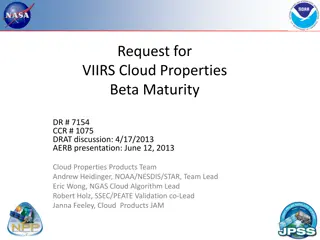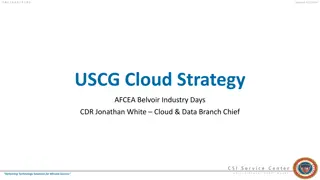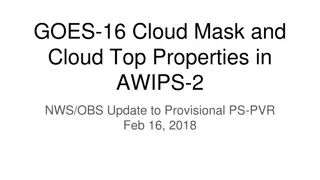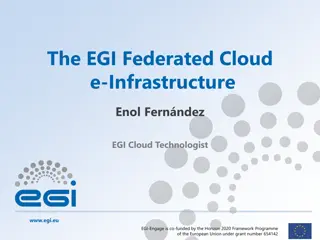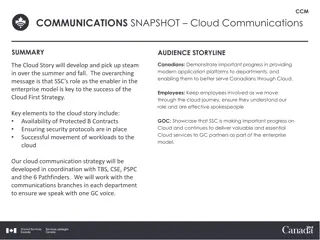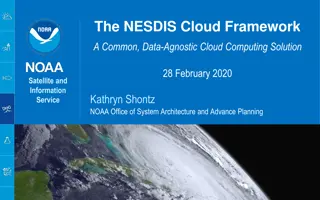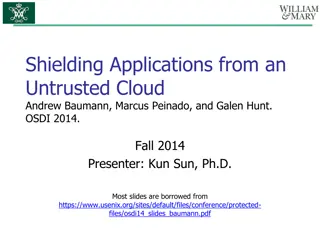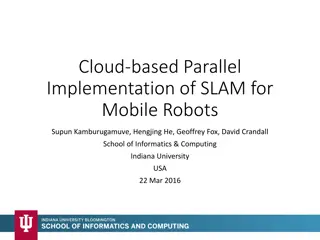A Comprehensive Study on Cloud Dynamics
Simulation aims to explore warm rain formation, detrainment layers, and cold pools in EUREC4A cases. The study investigates the influence of large-scale forcings on smaller scales, focusing on cloud-base mass-flux behavior, warm rain processes, and rain shaft dynamics. Sensitivity experiments and proposed workflows provide insights into microphysical processes and domain size effects. The LES approach employs a single-column-like method with input derived from various NWP sources, emphasizing trajectory analysis and advection tendencies.
Uploaded on Mar 04, 2025 | 0 Views
Download Presentation

Please find below an Image/Link to download the presentation.
The content on the website is provided AS IS for your information and personal use only. It may not be sold, licensed, or shared on other websites without obtaining consent from the author.If you encounter any issues during the download, it is possible that the publisher has removed the file from their server.
You are allowed to download the files provided on this website for personal or commercial use, subject to the condition that they are used lawfully. All files are the property of their respective owners.
The content on the website is provided AS IS for your information and personal use only. It may not be sold, licensed, or shared on other websites without obtaining consent from the author.
E N D
Presentation Transcript
Simulation aims 25m simulations (10s of kms): warm rain formation, BL structures, cold pools. 100m simulations (~200 km) : detrainment layers, organisation, cold pools. Understanding influence of large-scale forcings (including mean vertical velocity and shear) on smaller scales, through controlled sensitivity experiments. What sets cloud-base mass-flux? Warm rain process in different EUREC4A regimes, including evaporation. Behaviour of detrainment layers (e.g. persistence/droplet sizes/role of shear/cloud shape/radiation) Rain shafts+cold pools: mixing, gust fronts (other people working on this as well), interaction with BL structures/growth of BL structures in cold pools. Boundary-layer coherent structures in different regimes (ParaCon tools). Role of gravity waves. 2 2
Previous work RICO intercomparisons and follow-up work: sensitivity of warm rain processes to microphysical formulation. Heus and Seifert: importance of domain size and resolution for organisation. Recent work by Vogel/Nuijens/Stevens: interactive radiation important for: Stratiform clouds Correct sensitivity of cumulus to RH Also found strong sensitivity to domain size. Pseudo-warming studies by Malte Rieck et al. 3 3
Sensitivity experiments Large-scale forcing, microphysics (aerosols/scavenging?, collision/coalescence, evaporation), pseudo-warming (based on pseudo-warming UM changes?) Potential physics experiments: domain size, sea surface (variability), homogenising/prescribing radiation, advection/turbulence/Galilean transformation? Visible image from MONC+CASIM+ SOCRATES (with CEMAC/Oxford). 4 4
LES approach Based on single-column-like approach (rather than open BCs). Not as fully idealised as some previous cases. Good experiences (Neggers, Blossey) deriving forcing from NWP. Ideally derive forcing from different NWP/reanalysis (including UM), with corrections from observations (e.g. Neggers studies). Focusing on demi-Lagrangian cases here (i.e. moving along trajectory at a given level, with advection tendencies at some levels). Will need to analyse trajectories. Lack of observations at start of trajectory. What scale to average forcing over? Probably no weak temperature/pressure gradient feedbacks. 5 5
Proposed workflow 1) Extract NWP/analysis/observations. 2) Python: combine and ensure interpolation consistent for different vertical levels. 3) Python: conversion to NetCDF for prescribed levels, probably based on HIGH-TUNE format (shareable, will help expand MONC setup database). 4) MONC input files: text based, combines case setup with model parameters. Possibly other LES as well. 5) Analysis tools (later slide). Store as much as possible on online repository, including inputs to step 2. Strength: distinguish driving model from LES dynamics, explicit control of LS forcing. Drawback: enforced scale-separation, so may not work for all regimes. 6 6
Lagrangian LES in the context of EUREC4A Setups to be used for Isotopes (Blossey/Noone/Bailey/Galewsky). Other LES approaches in EUREC4A: ship-based (Kazil), nested LES (Schemann), superparametrisation-like (Siebesma). Need to coordinate well to prevent multiple versions of case-setup (even BOMEX). 7 7
Set-up Deriving forcings from UM Interpolation and smoothing. Sea surface parametrisation (start with fixed SST and default MONC flux parametrisation, to be coordinated). In some cases parametrised large-scale response (WPG/WTG) Combining with observations Relative weight of corrections, as a function of distance to location of observations. Earlier work by Bony and Stevens shows reliable large-scale forcings can be derived from observations. It also mentions ICON simulations capture vertical variability of subsidence rate. 8 8
Linking in to other work ParaCon Leif Denby s earlier work on a case repository https://github.com/leifdenby/moistconvection/ Diagnostics for MONC. Other projects HIGH-TUNE (input formats) Grey-zone project (non-idealised, but same cases could be used) ATOMIC LES SAM/isotopes (Peter Blossey) InScAPE group Cologne: tool for IFS and Dutch Atmospheric LES available 9 9
Diagnostics MONC s diagnostics server had start-up problems (problems with high-frequency diagnostics/reliability/debugging). Better now? ParaCon has developed many more diagnostics. Still my biggest worry about using MONC. In favour of developing simpler approach if needed. Other MONC diagnostics available off-line (including pseudo- trajectories, cloud tracking). Inclusion of tracers: pseudo-position (for tracking), radioactive surface-flux with 2 different time-scales, cloud/rain evaporative tracers?. 10 10
What could this look like? cases_raw arm_brown_et_al bomex_fixed_subs eurec4a_20200121 eurec4a_20200203 output_hightune bomex_fixed_subs output_monc bomex_fixed_subs src lestool.py readers IFS UM nudge_to_sounding writers MONC 12 12
